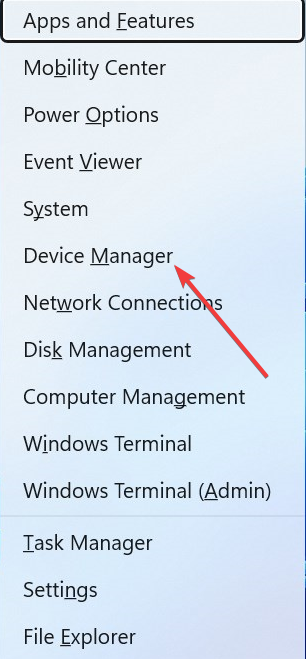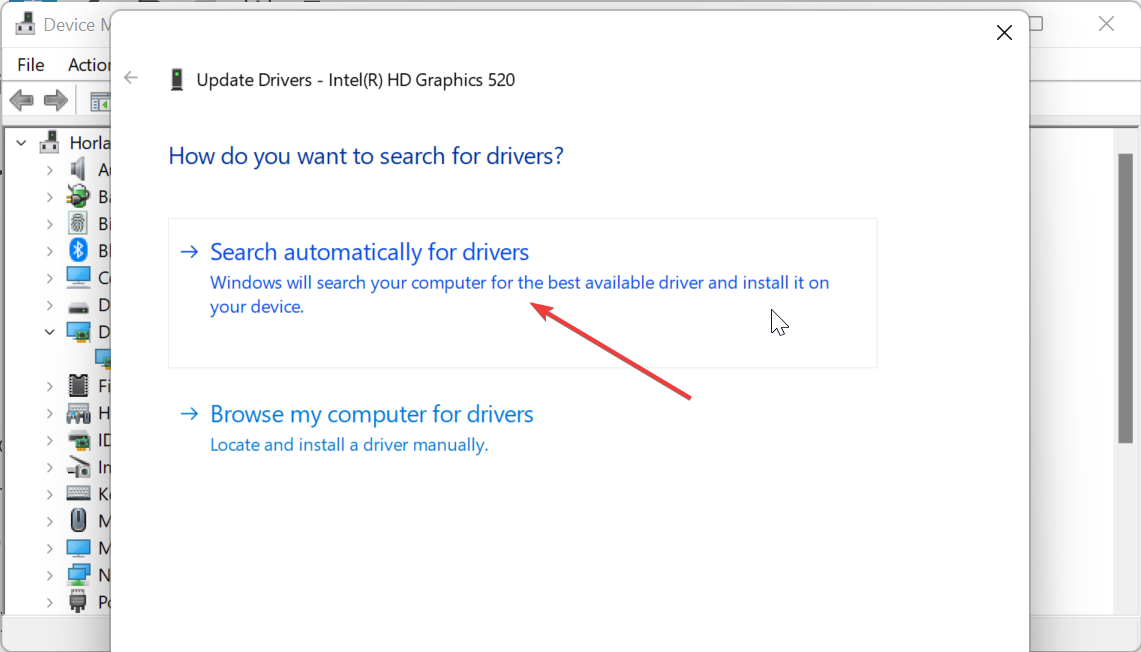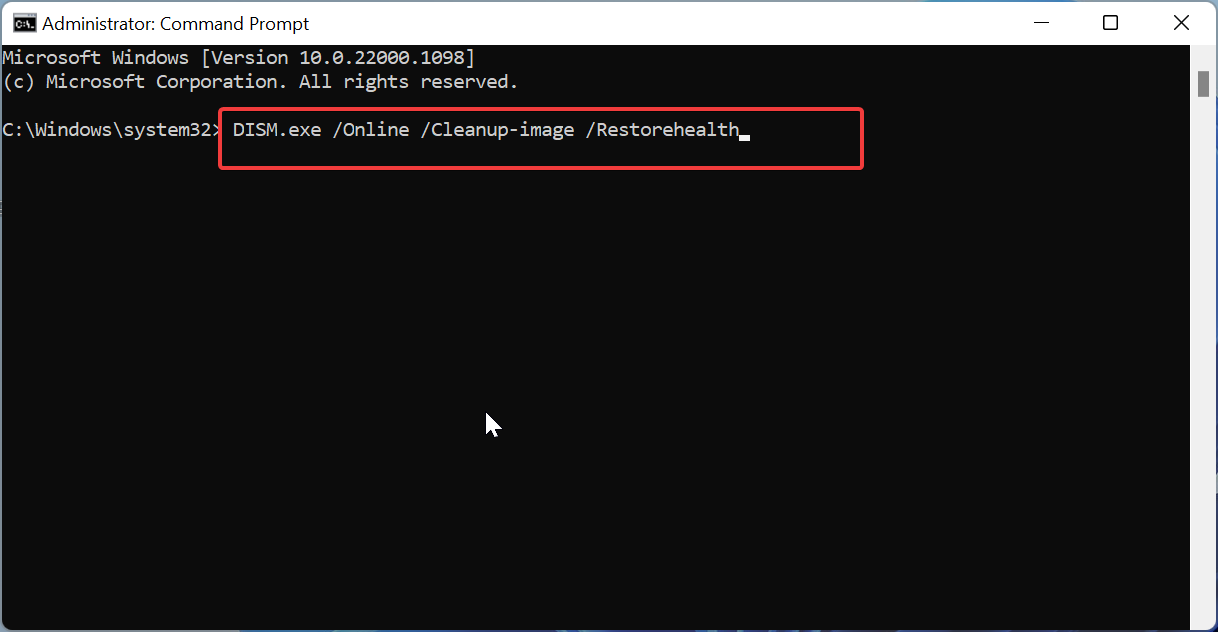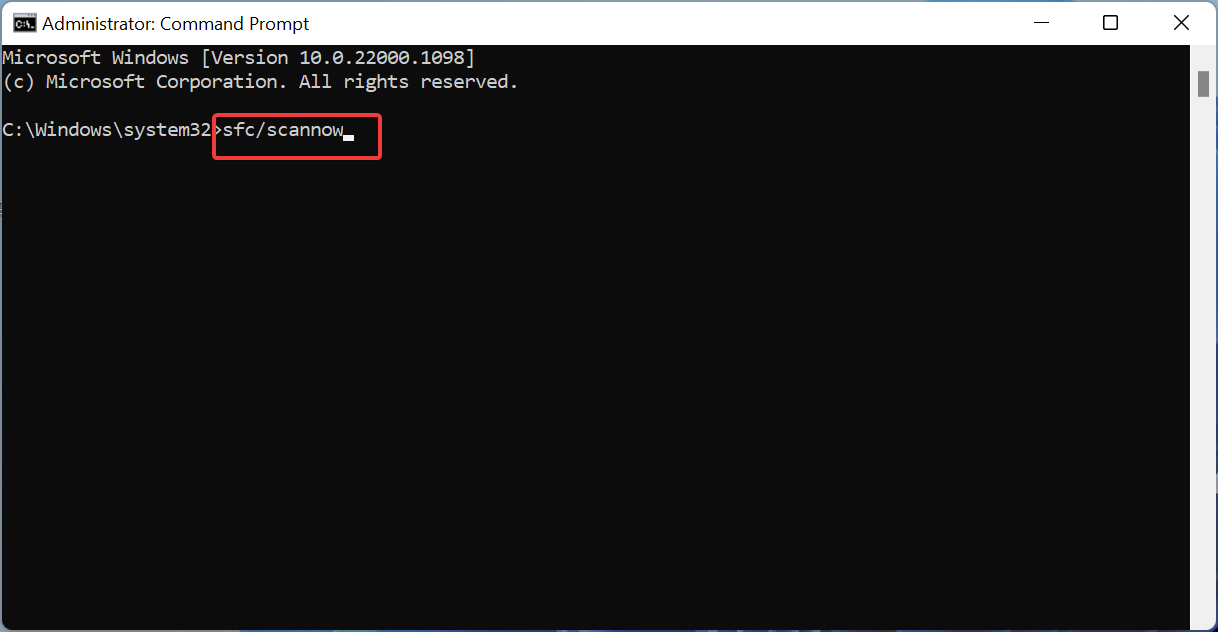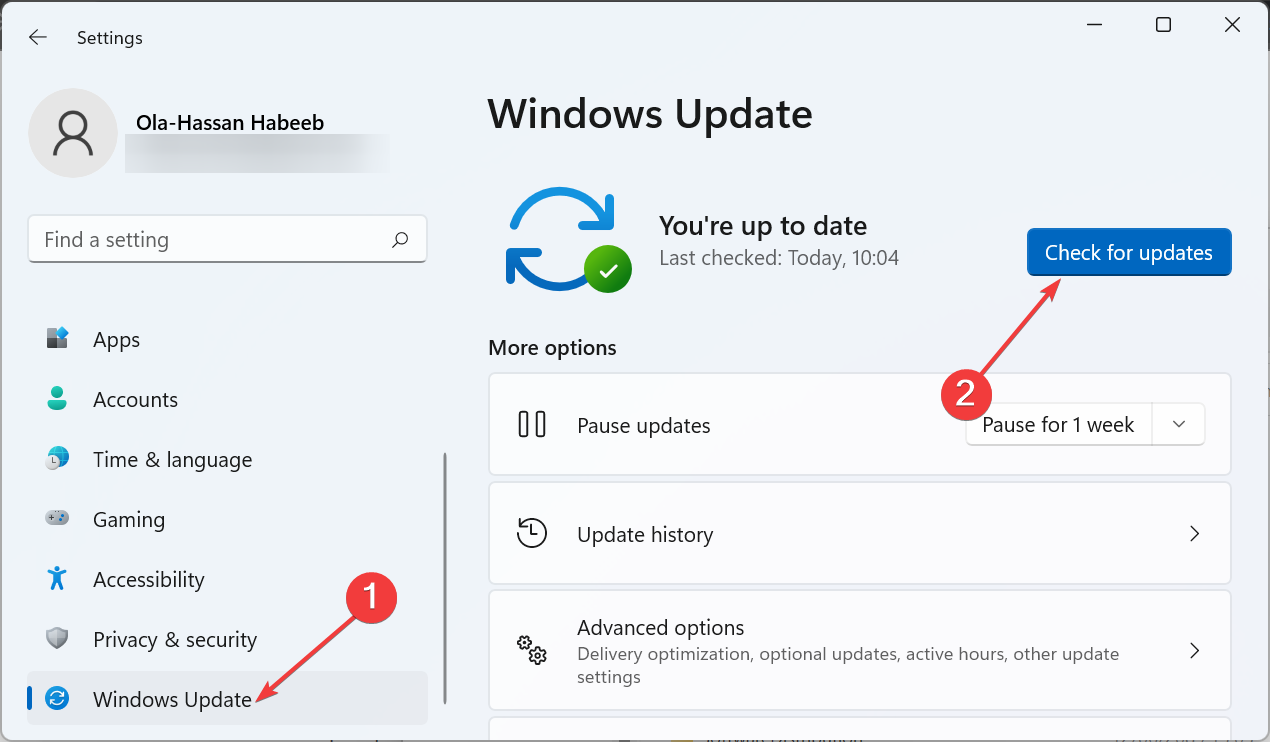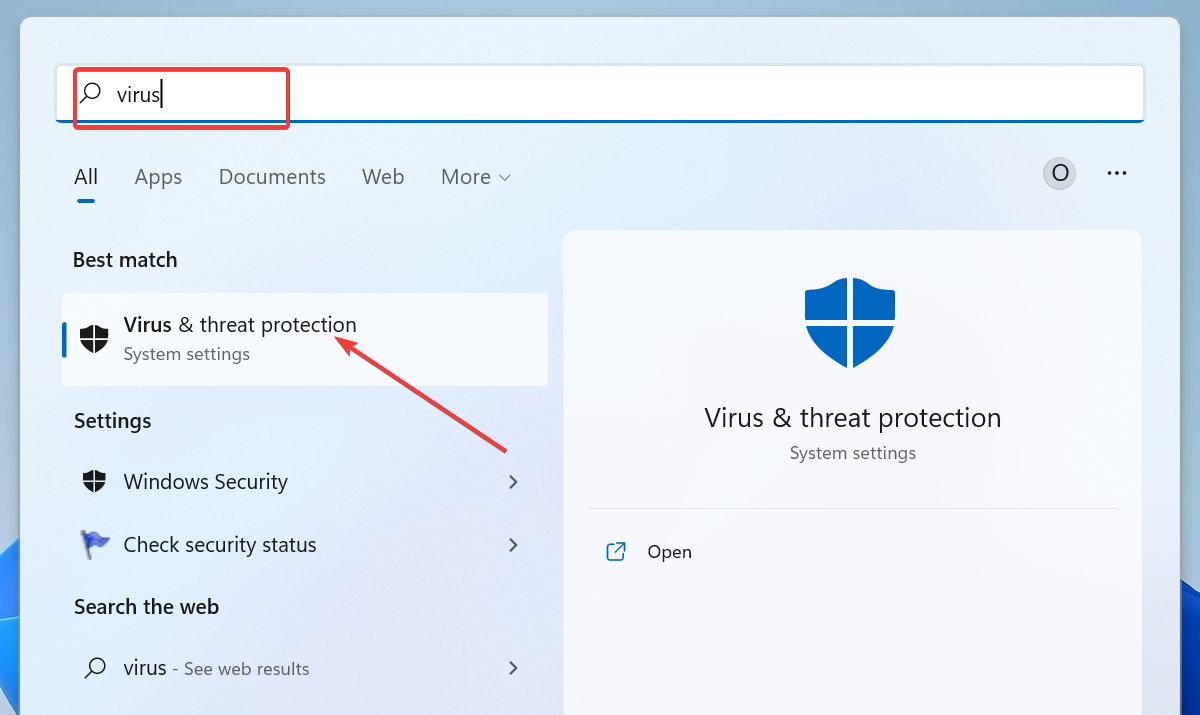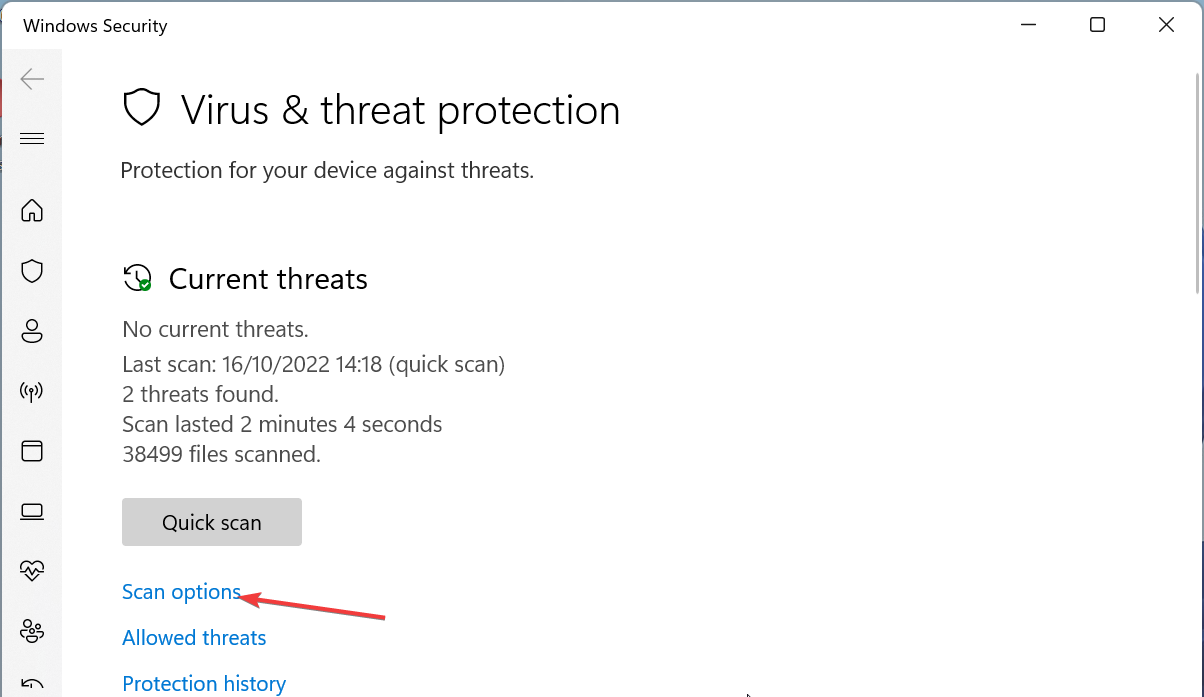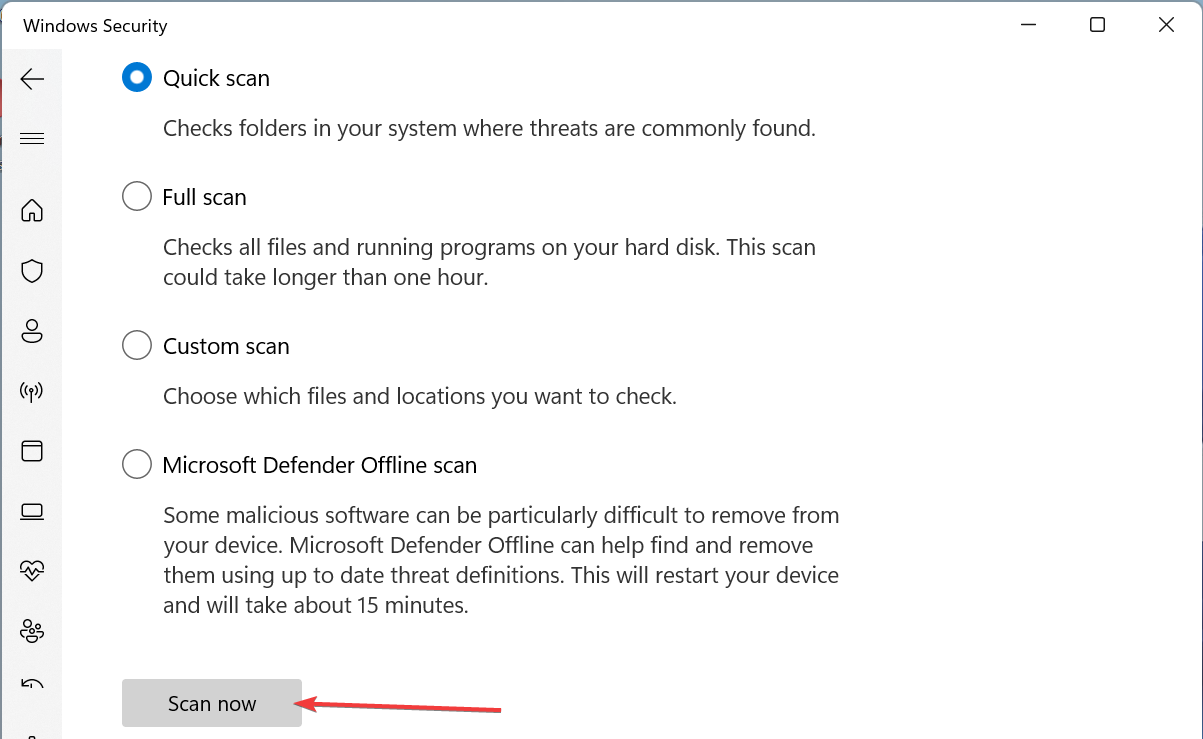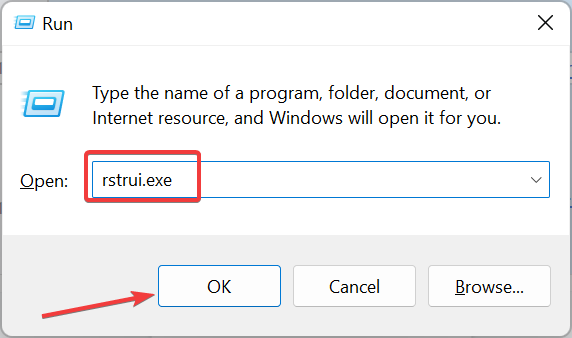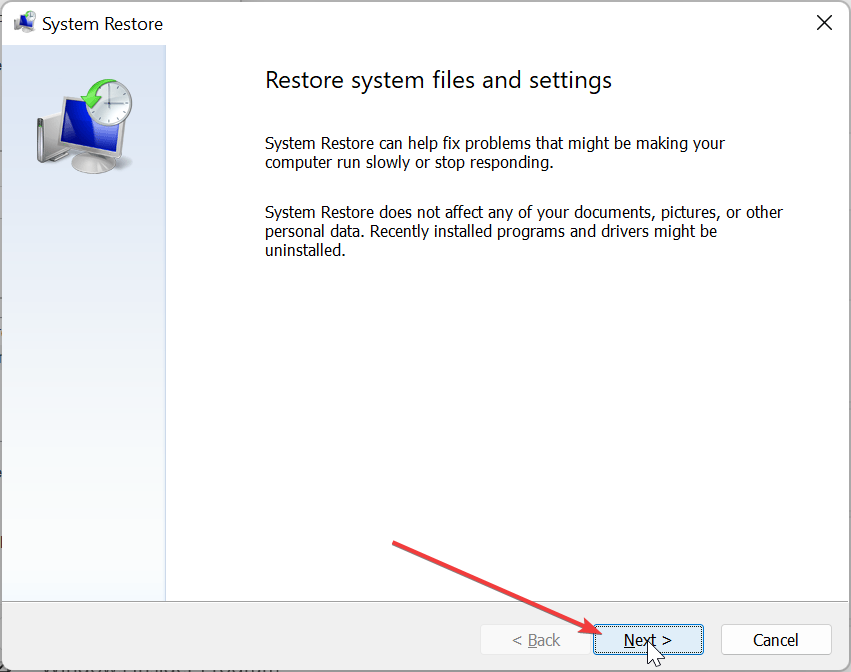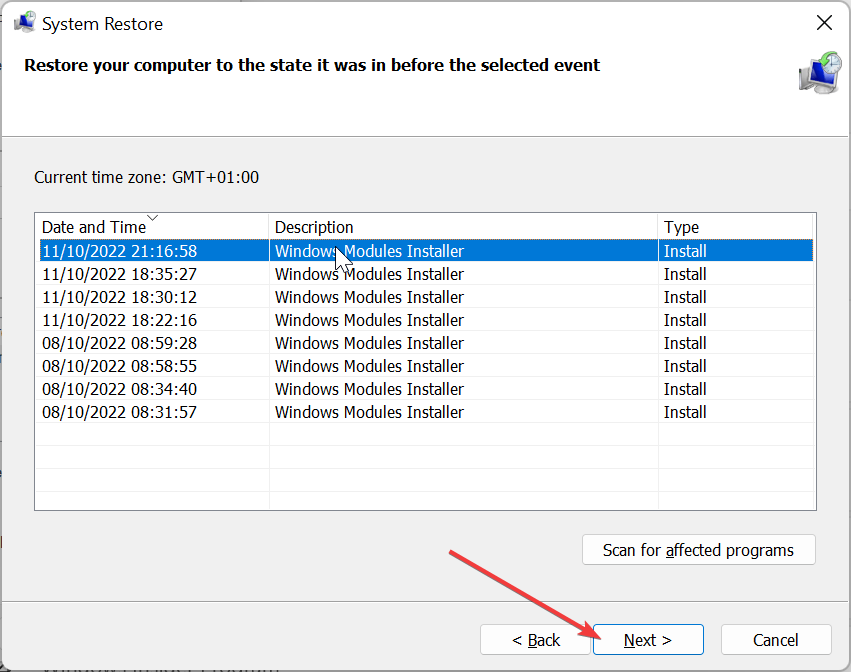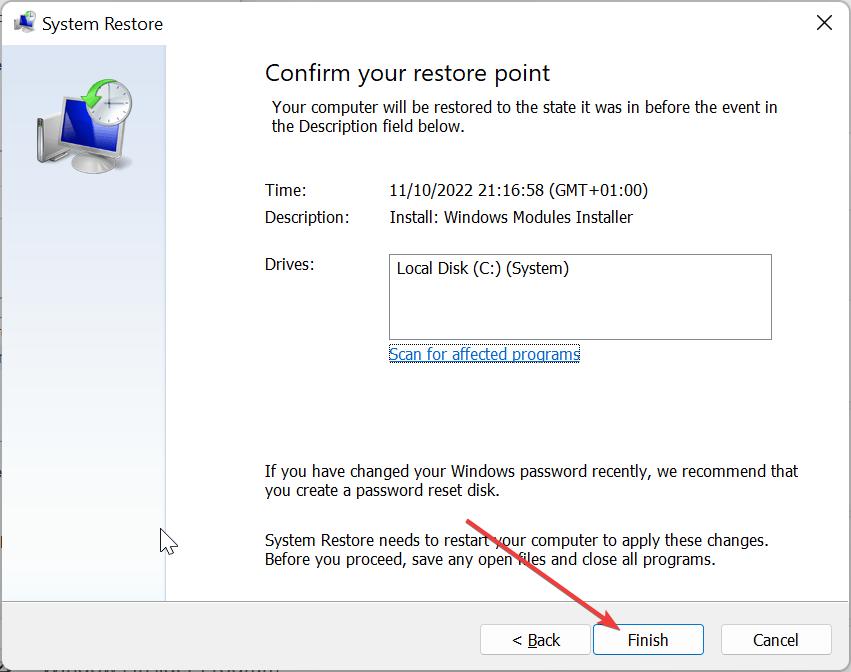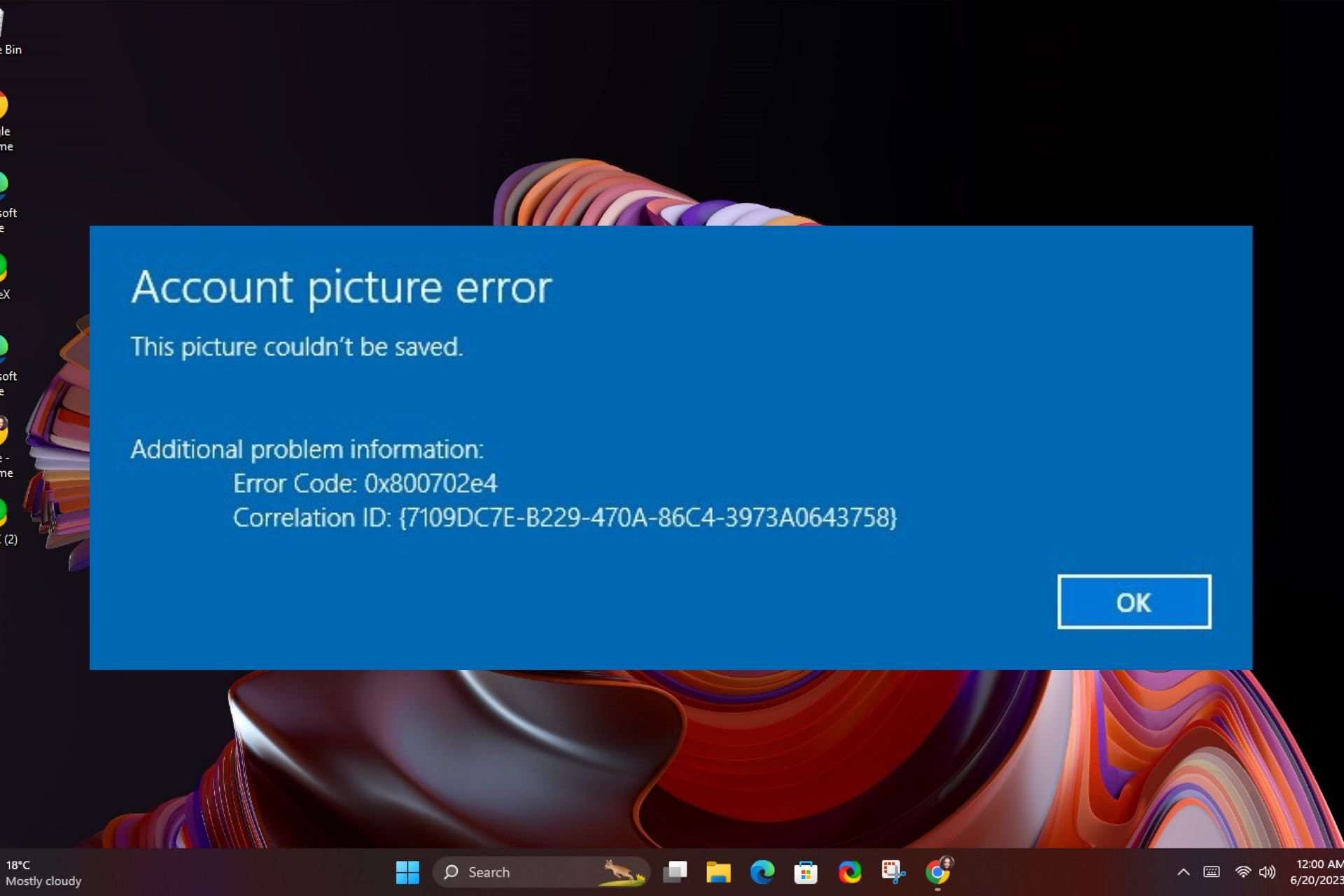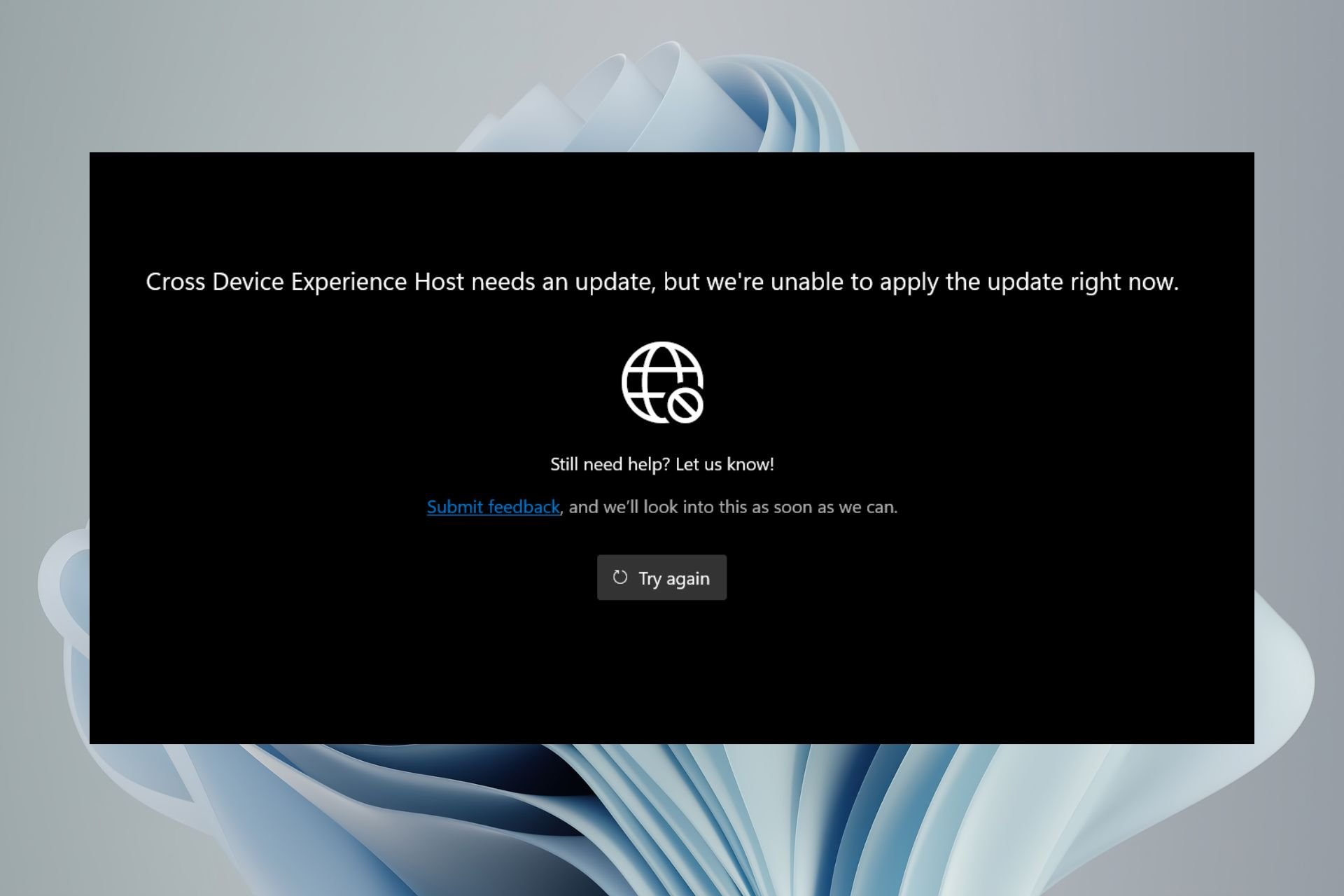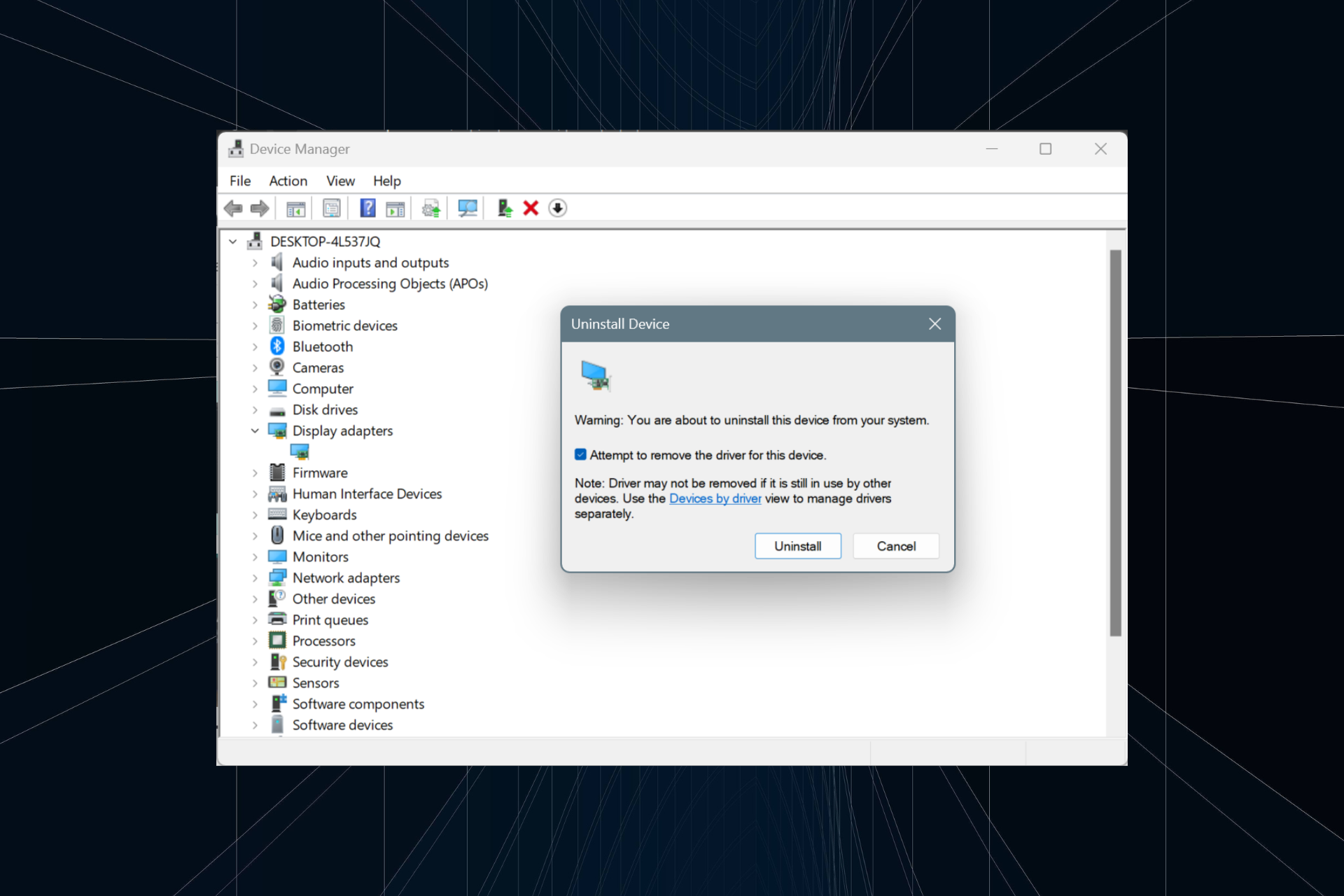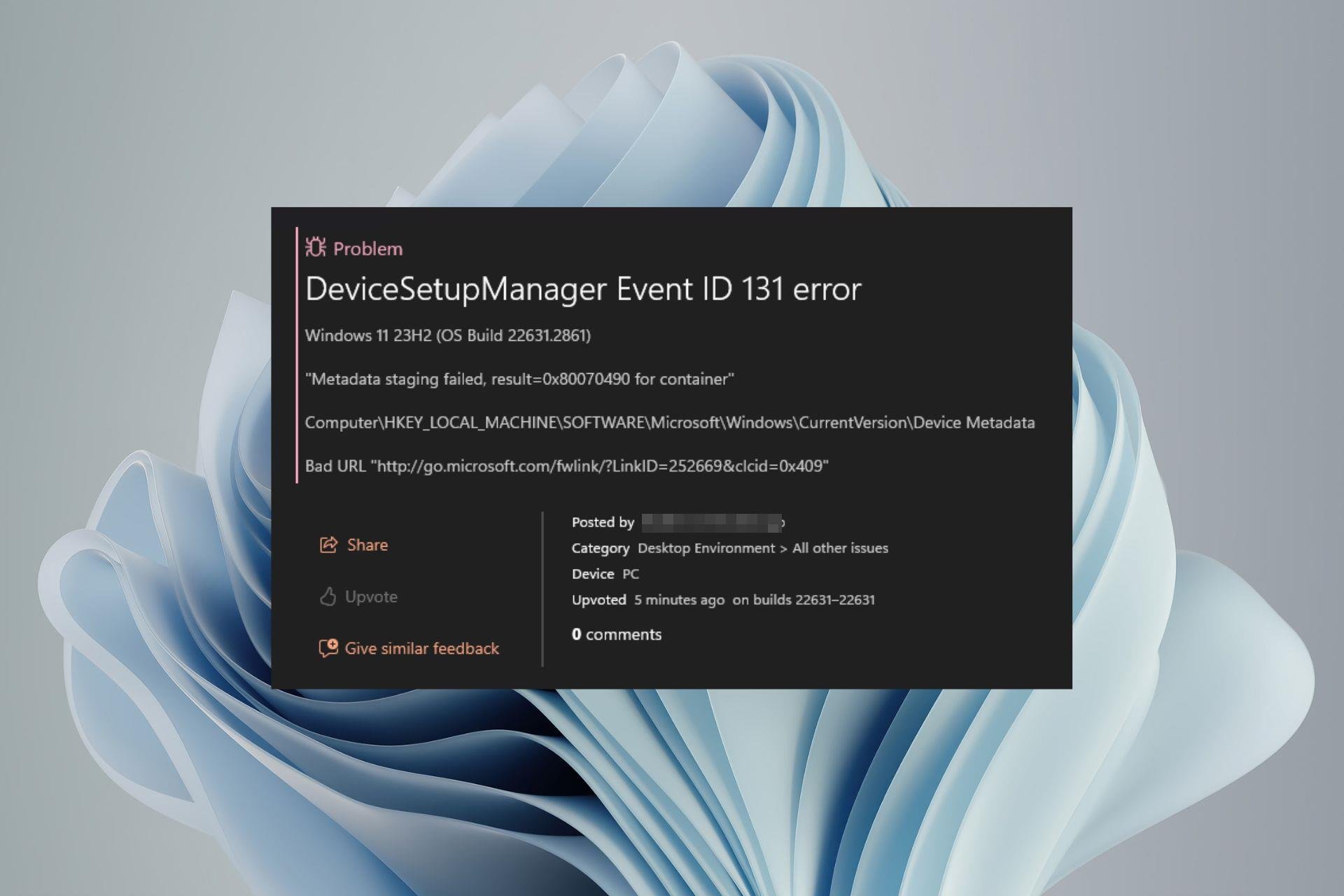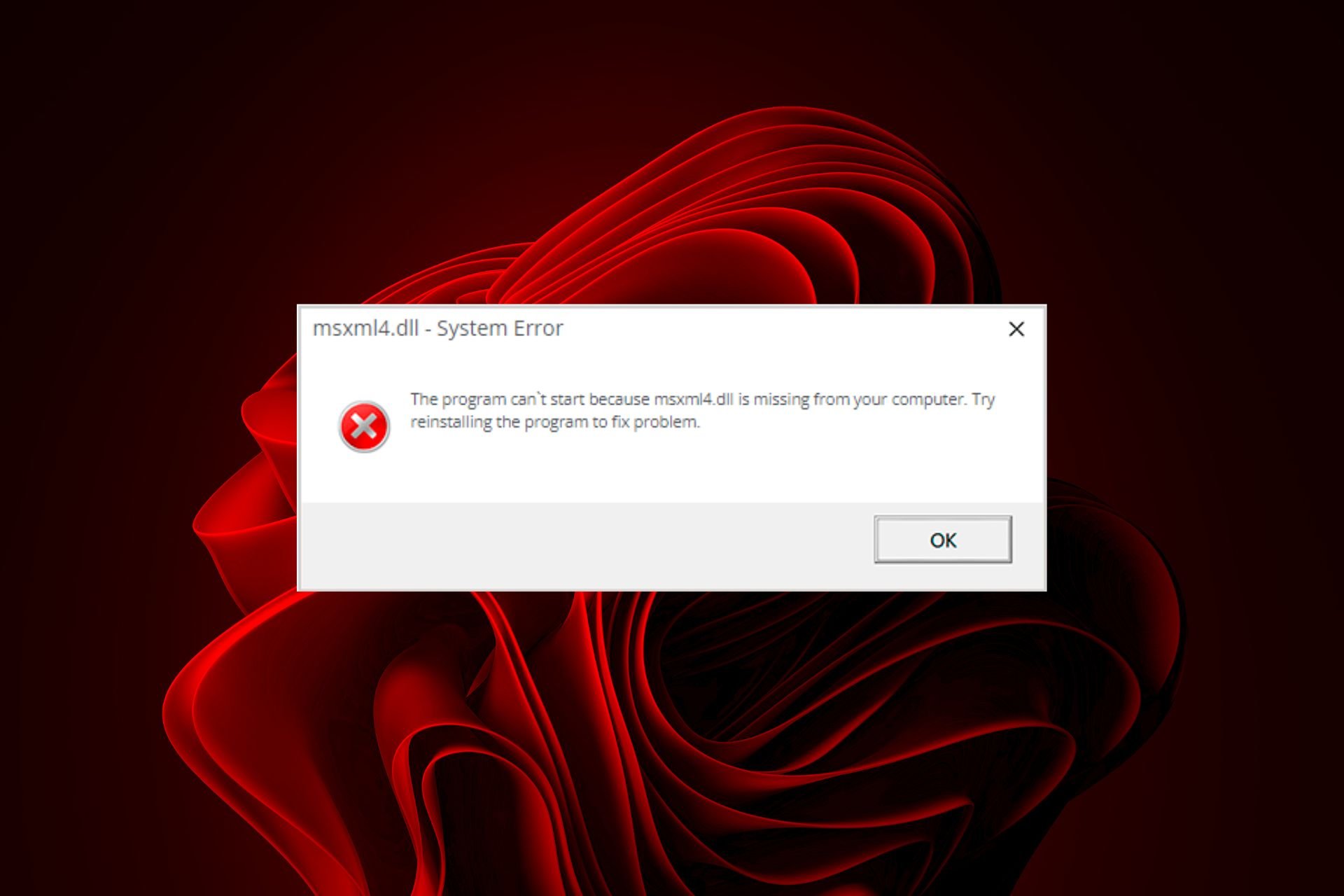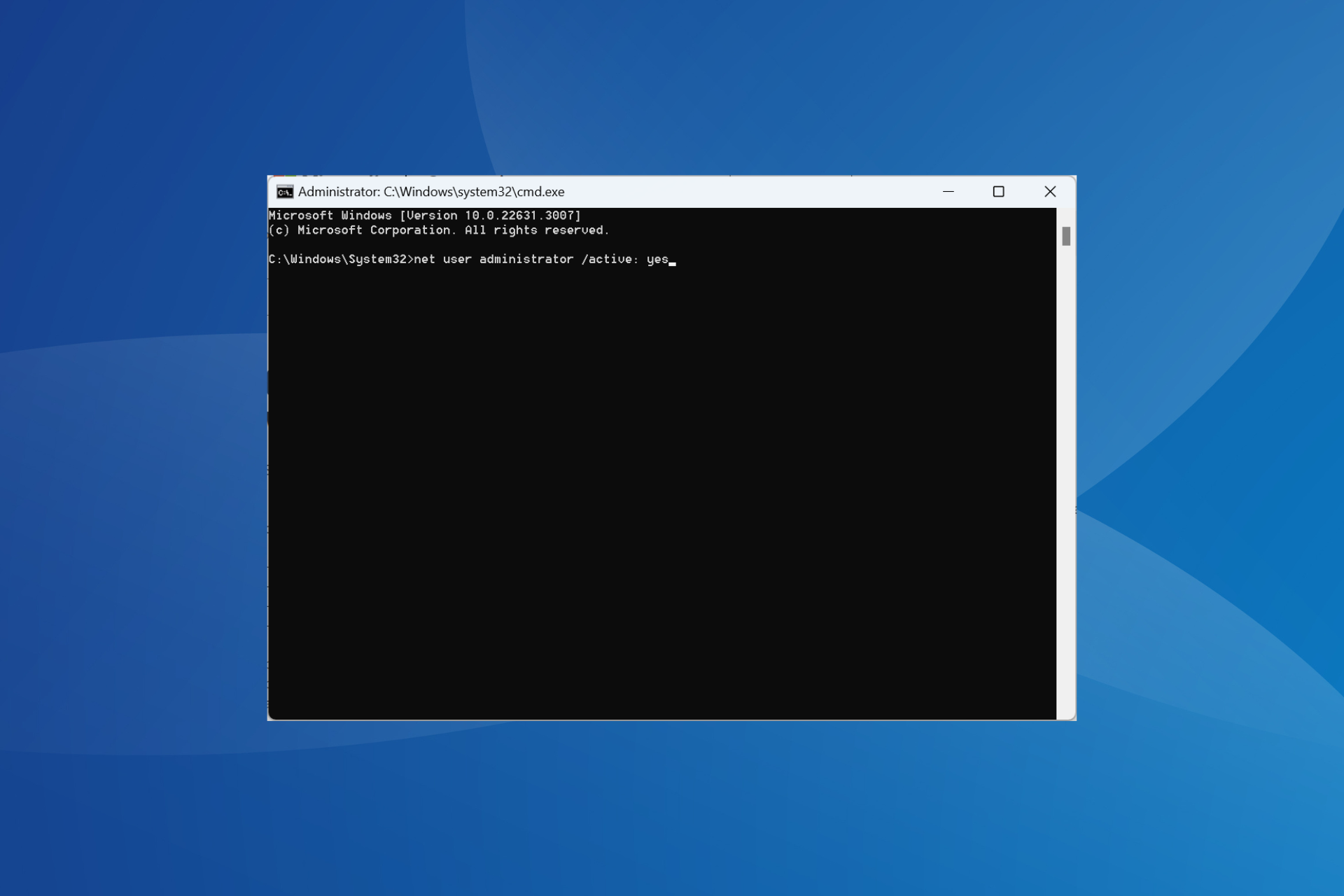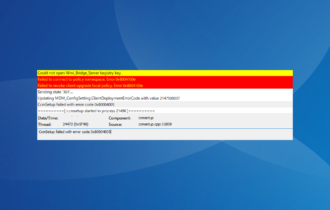Vid.sys BSOD: Causes & How to Fix It in 5 Steps
Everything you need to get rid of this frustrating error
4 min. read
Updated on
Read our disclosure page to find out how can you help Windows Report sustain the editorial team Read more
Key notes
- If you are dealing with the vid.sys BSOD error, it might be because of an outdated operating system.
- A quick yet effective way to fix this issue is to update your drivers to the latest version.
- Performing a system restore is another surefire way to solve this problem.
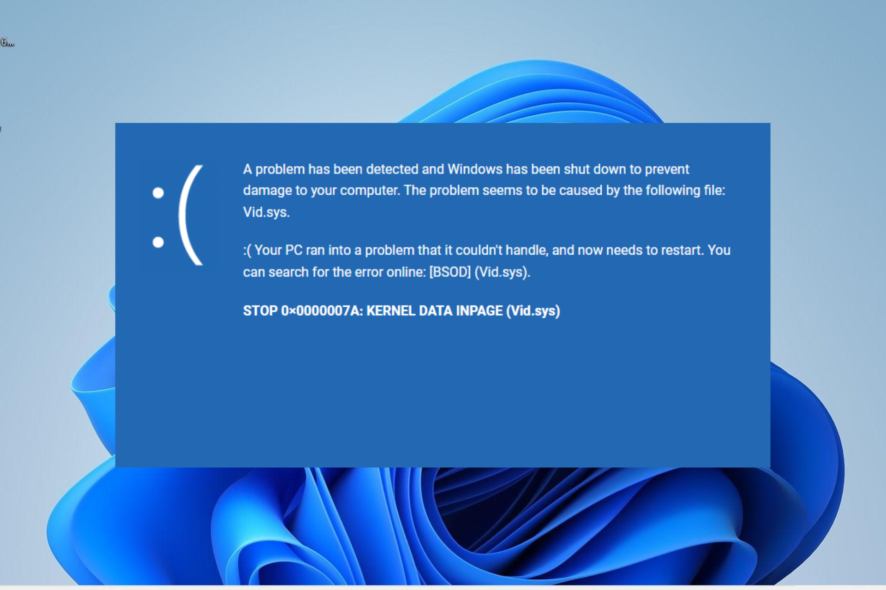
Among the long list of errors users encounter on Windows PC, BSODs are undoubtedly the most dreadful. One of these frustrating errors is vid.sys.
This error can be due to faulty hardware or driver issues. If you are also dealing with this Blue Screen of death error, this guide will show you quick and effective ways to fix it quickly.
What is vid sys?
The vid.sys Blue Screen of Death error usually occurs due to driver issues or faulty hardware. Listed below are some of the potential causes of this error message:
- Outdated driver: One of the leading causes of vid.sys is an outdated or broken driver. Reinstalling or updating your drivers to the latest version should solve the problem.
- Corrupt system files: If you have corrupt system files on your PC, it might lead to this BSOD. The solution to this is to repair and restore these files.
- Outdated PC: An outdated operating system can also lead to this error, and you can fix this by updating your PC.
How can I fix the vid.sys blue screen error?
1. Update the driver
- Press the Windows key + X and select the Device Manager option.
- Double-click the Display adapters section and right-click the driver under it.
- Now, select the Update driver option.
- Finally, choose Search automatically for drivers and install any available updates.
One of the major causes of the vid.sys BSOD error is an outdated display driver. Hence, you need to update your driver to get past the issue.
Another effective option is to use an automatic driver updater to complete this task. This saves you the stress of searching for and installing the drivers yourself. Also, it eliminates the risk of downloading the wrong driver, which can lead to further problems.
2. Repair system files
- Press the Windows key, type cmd, and select Run as administrator under Command Prompt.
- Type the command below and hit Enter to run it:
DISM /online /cleanup-image /restorehealth - Wait for the command to finish running. Now, run the command below:
sfc /scannow - Finally, wait for the command to finish running and restart your PC.
Sometimes, you might face the vid.sys error. The solution to this is to run the DISM and SFC scans.
Alternatively, you can fix this issue for good by using a dedicated repair tool to save you from the stress of running a series of commands and repairing the files manually.
3. Update your PC
- Press the Windows key + I to open the Settings app and click Windows Update in the left pane.
- Click the Check for updates button.
- Now, download and install all available updates.
If your OS is outdated, it is prone to different issues, including this vid.sys BSOD error. The quickest way to fix this is to update your operating system, following the steps above.
4. Scan for malware
- Press the Windows key + S, type virus, and choose Virus & threat protection.
- Click the Scan options link on the next page.
- Finally, select your preferred scan option and click the Scan now button.
The presence of malware on your PC can lead to varieties of issues, including the vid.sys error. What you need to do here is to perform a full scan.
5. Perform a system restore
- Press the Windows key + R, type rstrui.exe, and press Enter.
- Click Next on the new page.
- Now, choose your ideal restore point and click the Next button.
- Finally, click Finish and follow the onscreen instructions to complete the process.
If the solutions above fail to fix the vid.sys BSOD error, you need to perform a system restore to a point where everything works well. This will undo the changes you might have made that are causing the issue
There you have it: everything you need to fix the vid.sys Blue Screen of Death error. You should now be able to solve the problem with the solutions in this guide.
If you are dealing with a similar issue in navagio.sys BSOD error, check our detailed guide to fix it.
Feel free to let us know the solution that helped you solve this problem in the comments below.

